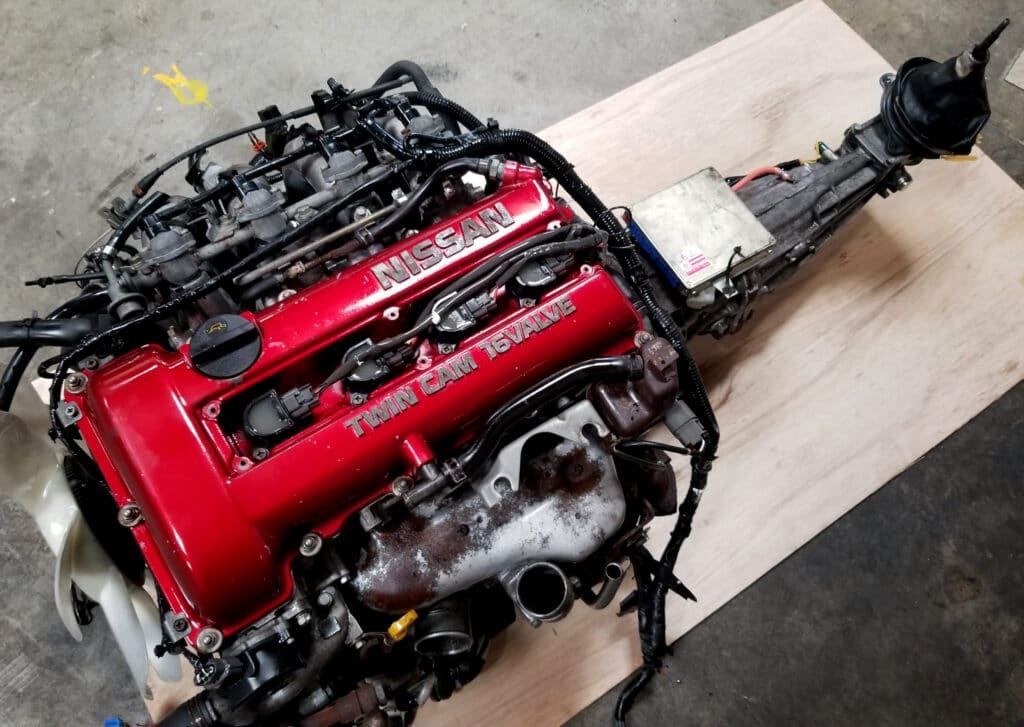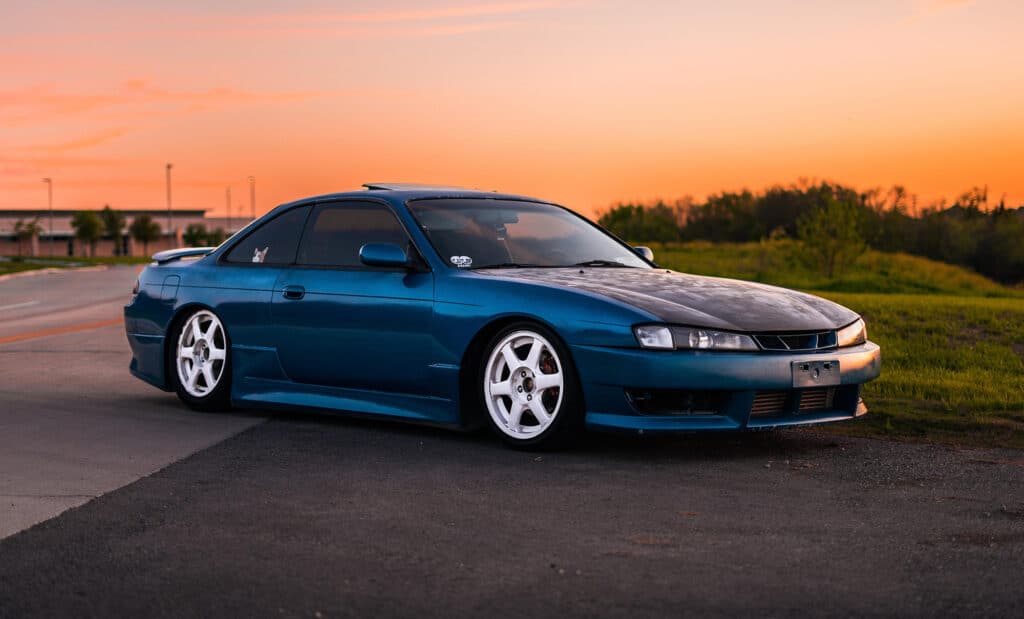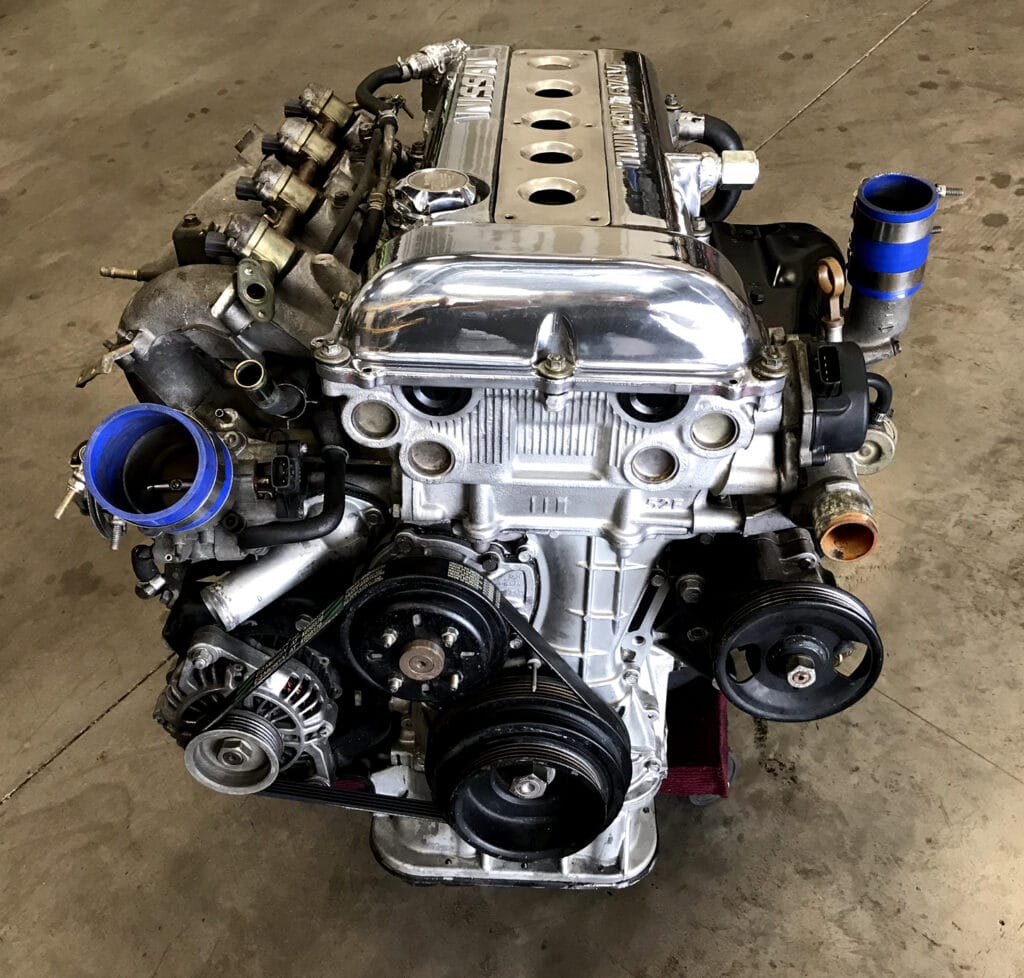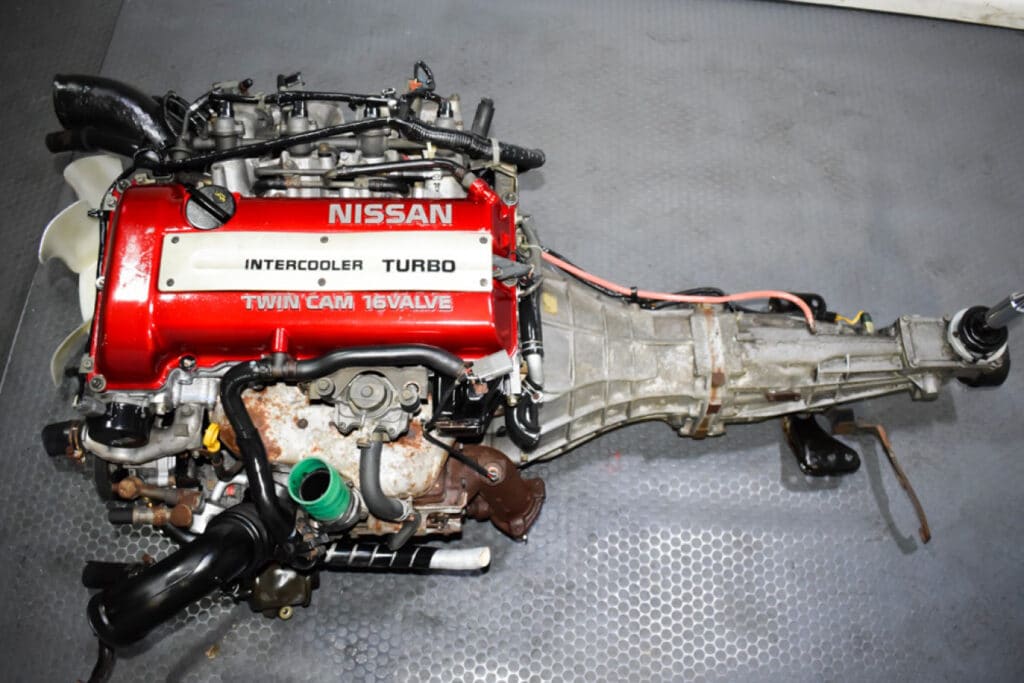The ever-popular SR20DET engine belongs to the family of straight-four engines that powered several sport compacts from Nissan’s stable.
Perhaps the most versatile motor from the Japanese marque, the SR20 came in a variety of forms, with its turbocharged avatar being a favorite.
Nissan plonked the motor in cars ranging from everyday runabouts to sprightly sports coupes. Sadly, none of them were sold in the United States.
But as imports started getting traction, a lot of SR20-equipped Silvias started arriving on American shores. And, unsurprisingly, a lot of them were scooped up by enthusiasts.
So what’s with the SR20DET? Why is it so coveted? Classic Japanese over-engineering, that’s why. They’re turbocharged from the factory; can be tweaked to twice the output with stock internals, and be further built to offer even greater power figures.
In this article, we’ll be diving deep and discussing all things SR20. More specifically, about its specs, reliability, and costs regarding engine swaps.
Nissan SR20 Engine Specs

- Engine Code: SR20DET
- Layout: Inline 4 cylinder turbo DOHC 16V
- Displacement: 2.0L (1,998 cc)
- Fuel System: Electronic Fuel Injection
- Cylinder Bore: 86 mm (3.39 in)
- Piston Stroke: 86 mm (3.39 in)
- Compression Ratio: 8.3:1, 8.5:1 (later versions)
- Power: 205 hp, 220 hp (at 6,000 rpm), 250 hp (at 6,800 rpm)
- Torque: 203 lb-ft at 4,000 rpm
- Firing Order: 1-3-4-2
Over the course of its production life, the SR20 experienced an evolution through small and incremental changes with each new iteration that Nissan released.
The “SR” in SR20DET is the engine series while 20DET stands for “2000-cc DOHC Electronic Fuel Injection Turbo.” All SR series engines, including the SR20DET, are interference engines manufactured in Yokohama, Japan.
Nissan made use of the SR20DET in the 180SX, 200SX, S13, S14, and S15 Silvias. But the engine wasn’t exclusive to these sports coupes. It also made its way into several daily runabouts like the Nissan Avenir and Pulsar.

The SR20DET has multiple iterations, visually identifiable by the engine cover. Among S13 Silvias (and 180SXs), Black Top and Red Top are the two types of SR20DET commonly seen in the market. However, there’s no difference in performance. Minor ECU changes, a newer wiring harness, and a larger oxygen sensor are what set them apart.
Slightly modified versions of the Black and Red Top engines were used in later S14 and S15 Silvias. But they’re generally hard to find.
With that, let’s move on to the specifics.
The SR20DET has an all-aluminum design with 86 mm bore and 86 mm stroke. It’s a square engine, offering healthy amounts of power and torque without much compromise. The SR20DET weighs around 180 kilograms or 400 lbs and holds 3.6 quarts of oil with a viscosity of 10W-40 (cold weather) or 15W-40 (for hot climates).

The closed-deck design employs dual overhead cams working a total of 16 valves across four cylinders. High-impedance fuel injectors spray fuel into cylinders with alloy liners and under-piston oil sprayers. The latter helps keep the piston temperature at a minimum.
Early S13 SR20s came with a “High Port” cylinder head that relied on non-variable timing camshafts. The engine made use of 370cc/min fuel injectors with a Garrett T25G taking care of forced induction. All this translated to 205 stock hp and 203 lb-ft of torque, healthy numbers for a compact sports coupe.
S14 Silvias came with Nissan’s newly updated SR20DET with Variable Timing Control (VTC). This engine received a larger, Garrett T28 turbocharger and redesigned intake manifold, which now houses smaller ports for increased intake velocity. Power output saw an increase and stood at 220 horsepower.
In the S15 Siliva, the SR20 got an upgraded Garrett GT28R ball-bearing turbocharger (previous versions had journal bearings) and larger 480cc/min injectors. An improved engine management system and new ignition coils helped the SR20 output 250 horsepower.
How Reliable Is the SR20DET?
There is no doubting how reliable the SR20 is. Just like RB26 and 2JZ, the SR20 is among the most durable JDM engines, thanks to Nissan’s engineering prowess.
In the late nineties and early eighties, quality control was not something that was easily overlooked as it is today. Plus, engines, especially Japanese makes, were typically over-engineered and built to last.
The SR20 is no exception, and there are accounts of stock motors lasting over 250,000 miles. However, finding an unabused example is next to impossible.
At the end of the day, it’s still a collection of moving parts, and there are bound to be problems. Many SR20 owners have found the aluminum block to warp, and some even mention stock rods and head gasket failure.
Generally though, if electronics like camshaft position sensors and crankshaft position sensors are functioning correctly, and emissions components like EGR valves are kept clean, these engines are quite reliable.
Being an interference engine, if the timing chain snaps, the valves can get into contact with the pistons, resulting in catastrophic engine damage. Cooling problems can also lead to the engine conking out.
Realize that the SR20 is solid. But factors like over-revving, poor mapping, lack of maintenance, and over-boosting are what ruins its reputation.
Boost pressure and cooling are super-critical, especially if your use case involves constantly sitting at high revs. Once over 20 psi, you’ll probably want a new head gasket and stronger head bolts too.
Crazy horsepower figures are possible so long as you upgrade the internals. Forged pistons, rods, quality gaskets, manifolds, and intercoolers are worth considering.
It’s not difficult to kill an SR20 — winding it up to 600 horsepower, running crazy boost numbers, and giving zero attention to engine cooling will get you there. Even then, it just might hold up, but not for long.
When you’re looking at mods, make sure to invest sensibly. If you have money to burn, by all means, blow an engine every two days. If you don’t; stick to simple but effective modifications and routine maintenance. The engine is built well and will definitely last for a very long time.
SR20DET Engine Swaps

Compared to the more potent RB26, the SR20 costs a lot less. Firstly, an RB26 alone would cost $10k, while a whole SR20 build can be done with approximately $5,000. This is with upgrades like carbon kevlar clutch kit, performance flywheel, intercooler systems, and whatnot.
An SR20 engine alone costs between $1k and $3k. If you add the cost of a transmission, the total cost will go up another $800 or so, depending on who and where you source it from. Or you can look around for a used KA24DE tranny from the 240SX. They’re basically the same and are relatively cheap; you’ll end up saving money there.
Labor can add another grand or so. Again, this depends on the amount of work there is. Do it yourself, and you can save on that.
Adding mods will further increase the bill. Stage one clutch packs cost $300, a hybrid turbo $600-$2,000, ECU, dyno tests, auxiliaries, the list goes on and on. A stage one setup (400-500 whp) can easily cost north of $2,500.
Anything more, and things become super expensive. An upgraded cylinder head alone will set you back $1,500! Add that with forged pistons, rods, larger turbos, upgraded camshafts, and it all starts becoming one expensive project.
Should You Get the SR20DET or Stick to RB, KA, or JZ Engines?
There are a few downsides to the SR20; the aluminum block being #1 on the list. If you’re looking to use it in a fun daily driver, the SR20 will suffice.
But, if your demands are high, and you’re seeking both high power without sacrificing reliability, consider the RB20 or RB25 from one of the Skylines that are banned from the USA.
For one, it’s an iron block, it can withstand more of a beating than the SR’s aluminum design, and has greater tolerances while still being affordable. Though JZ engines come at a premium, they are a similar deal to an RB engine too.
As for the KA24DE, the engine has an upper hand in terms of displacement. But it’s not that great at revving, nor is it stable at high rpm. The power is insufficient too. The KA24DE makes 140 horsepower, while the SR20 has 60 horses more. Plus, it’s heavier.
If you want a nimble sports car, it’s best to have the SR20 upfront. You get significant weight saving by employing an SR20. An RB26DETT weighs around 600 lbs (2JZ weighs even more), while the SR20 is 400 lbs — nearly a third lighter.
This weight comes from a heavier block. From a handling perspective, it’s a competitive disadvantage.
Possibly the best consideration is a SR20VET. This variant builds on the original engine but includes Nissan’s NEO VVL technology, which is similar to the VTEC you’ll often see on a Honda engine.
Nissan SR20 Engines: Concluding Thoughts

The SR20’s attainability is an attractive prospect. Parts are relatively cheap, despite the engine ceasing production in 2002. Also, unlike its more coveted Japanese counterparts, building one from the ground up doesn’t require deep pockets.
Thanks to more than two decades of development and aftermarket support, there are still plenty of parts available for the SR20DET.
If you’re sensible with your build, the SR20 can possibly outlast most of its rivals and continue offering the same thrills since day one.



1 comment
Where can I buy a brand new SR20DET and the KA24DE tranny?